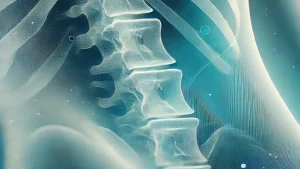Quantum Cascade Laser
Physicist Federico Capasso on semiconductor materials, industrial process control, and beam engineering
How to control the speed of light? What will happen if you reconstruct the evanescent waves? Arts and Sciences Distinguished Professor of Physics at Northeastern University Srinivas Sridhar explains how to manipulate matter on the nanoscale.
We’re now able to control materials at the nanoscale, which is much bigger than atomic scales, and smaller than microscales, where you do much of lithography. What this ability to control the structure of matter on the nanoscale now gives you entirely new ways to control — light. At Northeastern University in my laboratory in the Electronic Materials Research Institute, that I direct, we have been developing new materials that will control not only direction of light propagation, but also the speed of light propagation. So, ordinary matter like glass, for instance, has what is known as a positive reflective index. It bins light in a particular way. It was pointed out in the 1960s by Russian theoretician Victor Veselago, that you could create new materials which would actually have negative reflective indices.
Negative reflection, it turns out, is entirely compatible with the laws of physics, including Maxwell’s equations. They do not violate any laws. What happens in negative reflective materials is that you’re utilizing materials which have both negative permittivity and negative permeability. In such materials over a finite spectral window, that is a range of frequences, will have negative reflective index. This is one way of making negative reflective index materials. The other way of making negative reflective index materials is to take matter, and make periodic arrays or what is known as a photonic crystal. Photonic crystal is similar to an atomic crystal, it’s a periodic arrangement elements, but not atoms, in this case they are optical scatterers.
All materials in nature turn out to have positive reflective index. There could be arrangements of certain materials in nature where you could get negative reflective index, but we haven’t identified them naturally. They are all at the moment artificial and man-made. There are several things you can do with negative reflective index materials. One of the first things we showed was that you can make a lens out of a flat piece of negative reflective index material. The reasons, for instance, my glass is curved is because it has positive reflective index. If you took glass and you made a flat material like your window, it will not focus light. However, if the glass was made of negative reflective index material, a flat window or a flat lens will focus light.

Physicist Federico Capasso on semiconductor materials, industrial process control, and beam engineering
Physicist Eric Mazur on semiconductor surfaces, light detection, and the conversion of solar energy into elect...

Where do X-rays come from?